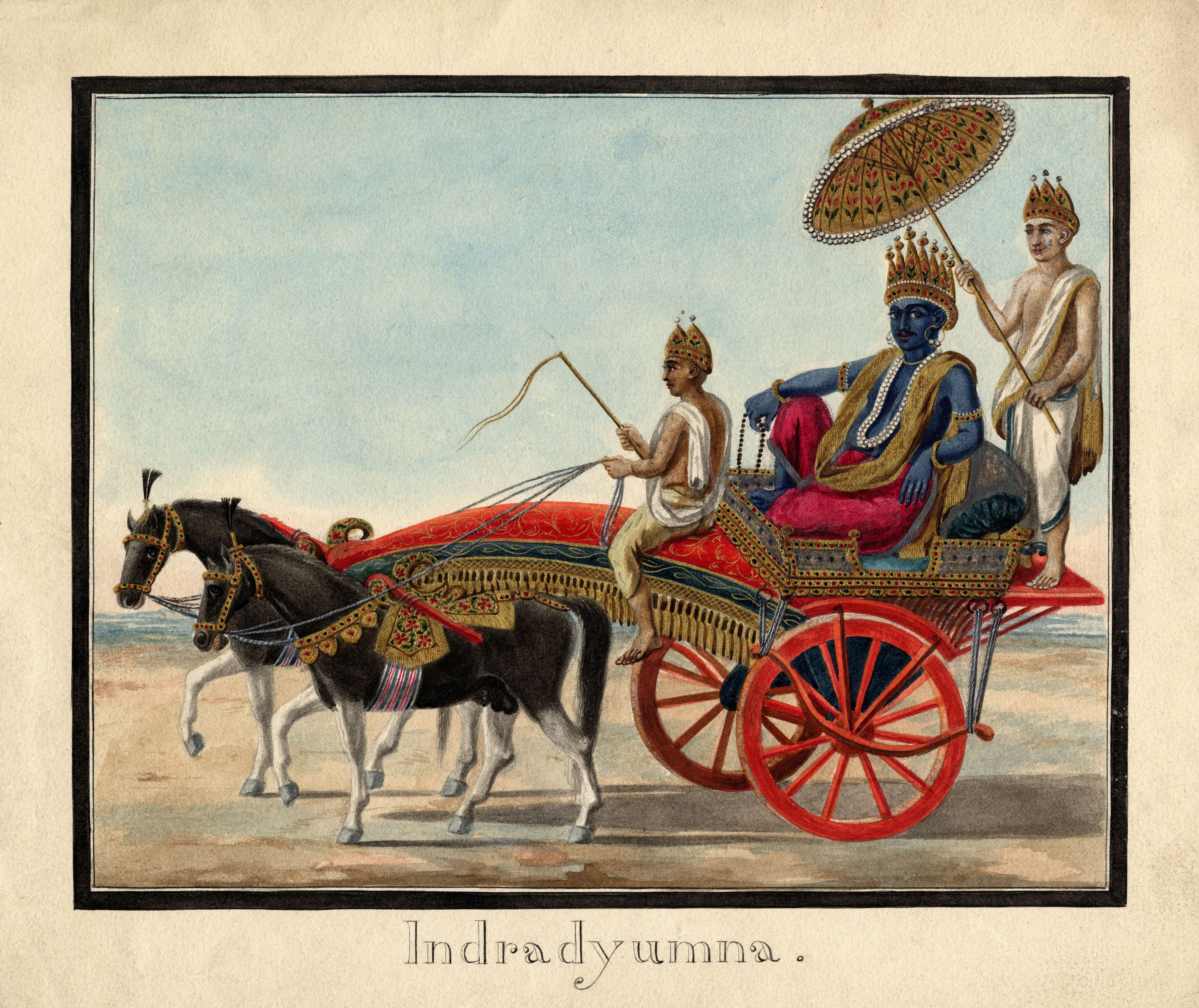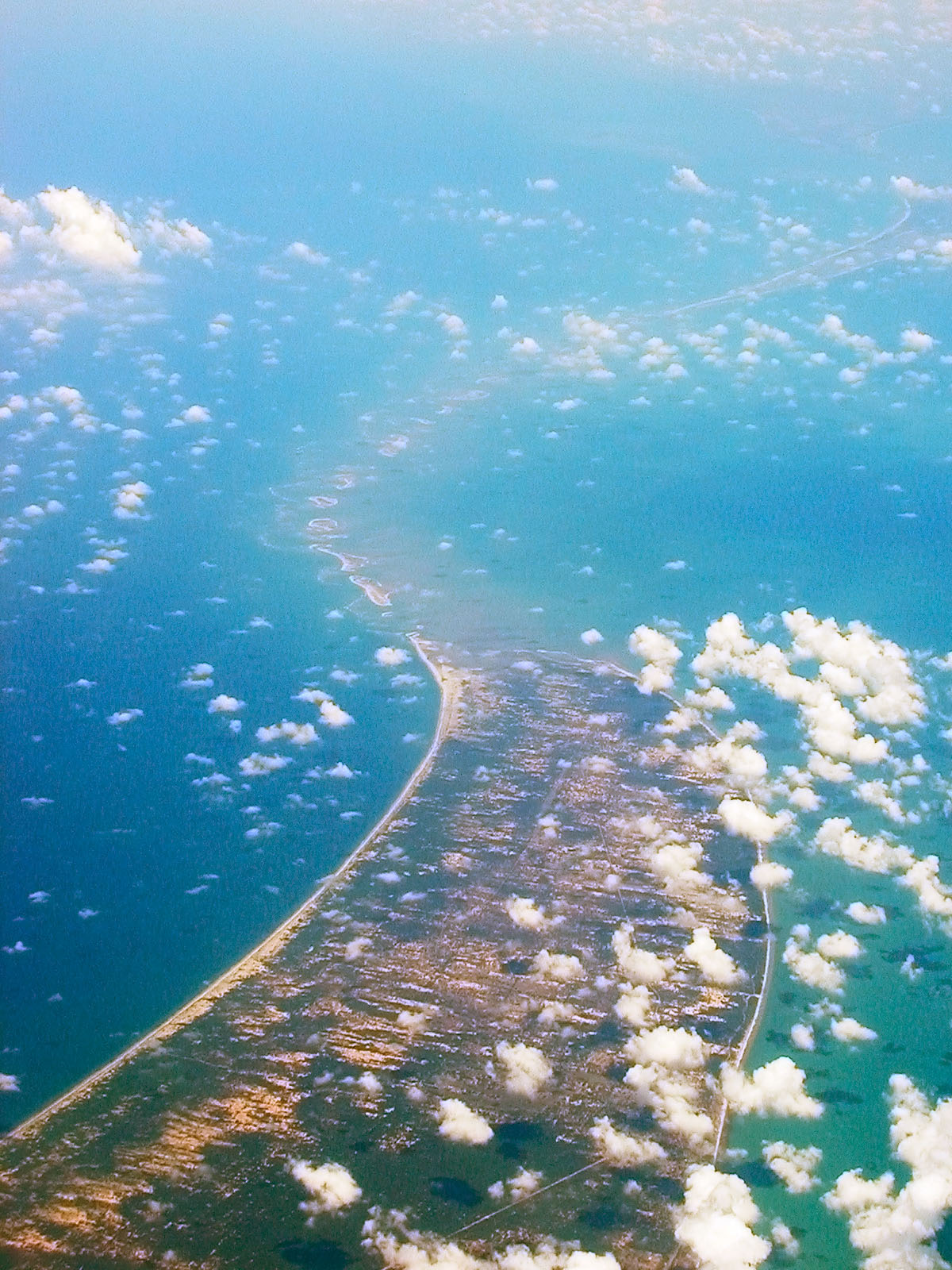|
Prataprudra Dev
Prataparudra Deva (Odia: ଗଜପତି ପ୍ରତାପରୁଦ୍ର ଦେବ) was the third Gajapati emperor of Odisha from the Suryavamsa Gajapati Empire started by his grandfather Kapilendra Deva Routaraya. He ruled from the year 1497 to 1540 A.D. Besides being a ruler, he was a devout Vaishnava and adherent of the famous saint, Sri Chaitanaya who arrived in Odisha during his rule. His life was extremely occupied with overwhelming military campaigns in defense of his inherited territory from three frontal invasions by the enemy states Vijayanagar, Hussain Shahi dynasty of Bengal and Qutb Shahi dynasty of Golconda. He lost large portions of his territory to the neighboring enemy states initiating the dissolution of Odisha's military hegemony and imperial status that continued for nearly a period of 600 years before him. Military Conflicts on All Fronts and Decline of Imperial Odisha Prataparudra Deva's life was heavily occupied in dealing with continuous military ... [...More Info...] [...Related Items...] OR: [Wikipedia] [Google] [Baidu] |
Purushottama Deva
Vira Pratapa Purushottama Deva (Odia: ବୀରପ୍ରତାପ ପୁରୁଷୋତ୍ତମ ଦେବ) was the second Gajapati emperor of Odisha who ruled from 1467 to 1497 C.E. He was the second ruler from the Suryavamsa Gajapati Empire. His father Gajapati Kapilendra Deva Routaraya chose him as his heir to rule Odishan Empire at the banks of river Krishna where he breathed his last. This decision infuriated the elder brother Hamvira Deva who was a battle hardened and successful warrior fulfilling the task of conquering the southern territories and expeditions against the kingdom of Vijayanagara as wished by his father. There is a legend that when, under divine guidance, Kapilendra Deva announced that he was naming Purushottama as heir apparent, the eighteen older sons in anger threw spears at Purushottama, all of which missed. Purrushotama Deva is also the lead character of the legend of Kanchi Kaveri Upakhyana (poem) written by the poet Purushottama Dasa in sixteenth ce ... [...More Info...] [...Related Items...] OR: [Wikipedia] [Google] [Baidu] |
Alauddin Husain Shah
Ala-ud-din Husain Shah ( bn, আলাউদ্দিন হোসেন শাহ (1494–1519)Majumdar, R.C. (ed.) (2006). ''The Delhi Sultanate'', Mumbai: Bharatiya Vidya Bhavan, pp.215-20 was an independent late medieval Sultan of Bengal, who founded the Hussain Shahi dynasty. He became the ruler of Bengal after assassinating the Sultan, Shams-ud-Din Muzaffar Shah, whom he had served under as wazir. After his death in 1519, his son Nusrat Shah succeeded him. The reigns of Husain Shah and Nusrat Shah are generally regarded as the "golden age" of the Bengal sultanate. Origin and early life There are several opinions regarding the origin of Alauddin Husain Shah. According to a 1788 chronicle, ''Riyaz-us-Salatin'', Sayyid Husain Sharif Makki was the son of Sayyid Ashraf al-Husaini, a Sharif of Mecca, with ''al-Husaini'' suggesting descent from Husayn ibn Ali. An earlier work by Firishta also mentions Husain as a Sayyid and former inhabitant of Mecca. His father's name is backed u ... [...More Info...] [...Related Items...] OR: [Wikipedia] [Google] [Baidu] |
Puri
Puri () is a coastal city and a Nagar Palika, municipality in the state of Odisha in eastern India. It is the district headquarters of Puri district and is situated on the Bay of Bengal, south of the state capital of Bhubaneswar. It is also known as ''Sri Jagannatha Dhama'' after the 12th-century Jagannath Temple (Puri), Jagannath Temple located in the city. It is one of the original Char Dham pilgrimage sites for Hindus. Puri is known by several names since the ancient times, and was locally known as "Sri Kshetra" and the Jagannath temple is known as "Badadeula". Puri and the Jagannath Temple were invaded 18 times by Muslim rulers, from the 7th century AD till the early 19th century with the objective of looting the treasures of the temple. Odisha, including Puri and its temple, were part of British India from 1803 till India attained independence in August 1947. Even though princely states do not exist in India today, the heirs of the House of Gajapati still perform the ... [...More Info...] [...Related Items...] OR: [Wikipedia] [Google] [Baidu] |
Kathajodi River
Kathajodi River is an arm of the Mahanadi River in Odisha, India. It branches off at Naraj, then immediately is bifurcated. The southern branch, known as Kuakhai, which means ''Crow's pool'', and flows into the Puri district. Its mouth is closed by a bar, so that little water flows into it except at flood times. A little lower down from Cuttack the Kathajodi is bifurcated. The right branch is ''Sidhua'' and the left branch is ''Khatajodi''. From flowing divide area 17 km the Khatajodi is merged with sidhua. The merge area is known as Odisha famous Dalei Ghai. The Kathajodi and the Sidhua create an island known as 42 Mouza. it is near about cuttack town just 2 km. Again the Kathajodi is bifurcated at Gobindpur, the right branch is known as the ''Devi'' and the left branch as the ''Biluakhai''. Flowing in the northerly direction, the river Kathajodi again divides into the ''Alaka'' and ''Kathajodi'' proper, which have been cut off at their head by the ''Devi'' left emban ... [...More Info...] [...Related Items...] OR: [Wikipedia] [Google] [Baidu] |
Ismail Ghazi
Ishmael ''Ismaḗl''; Classical/Qur'anic Arabic: إِسْمَٰعِيْل; Modern Standard Arabic: إِسْمَاعِيْل ''ʾIsmāʿīl''; la, Ismael was the first son of Abraham, the common patriarch of the Abrahamic religions; and is considered as a prophet in Islam. His mother was the Egyptian Hagar (). According to the Genesis account, he died at the age of 137 (). Jewish, Christian and Islamic traditions consider Ishmael to be the ancestor of the Ishmaelites (Hagarenes or Arabians) and patriarch of Qaydār. According to Muslim tradition, in which he is regarded as an ancestor of Muhammad,''A–Z of Prophets in Islam and Judaism'', Wheeler, ''Ishmael'' Ishmael thereby founded a great nation as promised by God in the Old Testament, and was buried with his mother Hagar ( Hājar) next to the Kaaba in Mecca, under the area demarcated by the semi-circular Hijr Ismail wall. Etymology The name "Yishma'el" existed in various ancient Semitic cultures, including early Babylonian ... [...More Info...] [...Related Items...] OR: [Wikipedia] [Google] [Baidu] |
Jaunpur Sultan Hussain Shah Surrendering Before Prataparudra Gajapati
Jaunpur may refer to the following places in India: *Jaunpur, Uttar Pradesh, a city **Jaunpur district **Jaunpur Lok Sabha constituency ***Jaunpur Assembly constituency *Jaunpur Sultanate, a 15th-century northern Indian kingdom * Jaunpur, Uttarakhand, an administrative division of Tehri Garhwal district Tehri Garhwal is a district in the hill state of Uttarakhand, India. Its administrative headquarters is at New Tehri. The district has a population of 618, 931 (2011 census), a 2.35% increase over the previous decade. It is the 7th ranked dist ... See also * Jaunpuri (other) {{dab, Geodis ... [...More Info...] [...Related Items...] OR: [Wikipedia] [Google] [Baidu] |
Alauddin Hussain Shah
Ala-ud-din Husain Shah ( bn, আলাউদ্দিন হোসেন শাহ (1494–1519)Majumdar, R.C. (ed.) (2006). ''The Delhi Sultanate'', Mumbai: Bharatiya Vidya Bhavan, pp.215-20 was an independent late medieval Sultan of Bengal, who founded the Hussain Shahi dynasty. He became the ruler of Bengal after assassinating the Sultan, Shams-ud-Din Muzaffar Shah, whom he had served under as wazir. After his death in 1519, his son Nusrat Shah succeeded him. The reigns of Husain Shah and Nusrat Shah are generally regarded as the "golden age" of the Bengal sultanate. Origin and early life There are several opinions regarding the origin of Alauddin Husain Shah. According to a 1788 chronicle, ''Riyaz-us-Salatin'', Sayyid Husain Sharif Makki was the son of Sayyid Ashraf al-Husaini, a Sharif of Mecca, with ''al-Husaini'' suggesting descent from Husayn ibn Ali. An earlier work by Firishta also mentions Husain as a Sayyid and former inhabitant of Mecca. His father's name is backed u ... [...More Info...] [...Related Items...] OR: [Wikipedia] [Google] [Baidu] |
Viranarasimha Raya
Vira Narasimha Raya (or Vira Narasimha Vira Narasimha III) (reigned 1505–1509) became the king of Vijayanagar empire after the death of Tuluva Narasa Nayaka. Krishna Deva Raya was his younger half-brother. The death of their capable father Tuluva Narasa Nayaka resulted in feudatories rising in rebellion everywhere. In his writings, Fernão Nunes noted that the whole world had risen in rebellion. At first, Immadi Narasa Nayaka, the eldest son of saluva Narasa Nayaka became king and lasted at the throne for two years before being assassinated. Vira Narasimha Raya was next crowned in 1505 and spent all his years fighting rebel warlords. Yusuf Adil Khan of Bijapur tried to extend his domains south of the Tungabhadra. The Vijayanagar regent was supported by Aliya Rama Raya of the Aravidu family and his son Thimma. With their help, Adil Khan was defeated and pushed back. Adoni and Kurnool area became a part of Vijayanagar Empire. During this time, the chief of Ummathur was again ... [...More Info...] [...Related Items...] OR: [Wikipedia] [Google] [Baidu] |
Ponnaiyar River
The South Pennar River (also known as ''Dakshina Pinakini'' in Kannada and ''Thenpennai or Ponnaiyar'' or ''Pennaiyar'' in Tamil) is a river in India. Bangalore, Hosur, Tiruvannamalai, and Cuddalore are the important cities on the banks of South Pennar river. This is the second longest river in Tamil Nadu, with a length of 497km, after the Kaveri. Chandapura, Anekal, Hosur, Bagalur and Chengam are the major industrial settlements on its banks. The river is severely polluted by industrial waste as it flows through major industrial areas in the eastern suburbs of Bangalore, Industrial parks of Hosur and Chengam. The river originates in the Nandi Hills in the Chikkaballapura district of Karnataka and flows through Tamil Nadu before emptying into the Bay of Bengal. It has a catchment area of located in Karnataka and Tamil Nadu states. Small dams of Kelavarapalli and Krishnagiri Dams are built across this river near Hosur and Krishnagiri. The largest dam on this river, Sathanu ... [...More Info...] [...Related Items...] OR: [Wikipedia] [Google] [Baidu] |
Madala Panji
The Madala Panji is a chronicle of the Jagannath Temple, Puri, Odisha, India. It describes the historical events of Odisha related to Lord Jagannath and the Jagannath Temple. The ''Madala Panji'' dates from the 12th century. Madala Panji's role in Odia history While writing Odia history, historians like Sir W.W.Hunter and Andrew Stirling considered the facts related in Madala Panji as a base. The Madala Panji was traditionally written on a year-to-year basis. On Bijaya-Dashami day, the Karanas (official history writers of Puri, a caste of Odisha, involved in keeping the chronicle. This ritual is cited as a proof that the tradition of keeping this chronicle began with Odia king Anantavarman Chodaganga Dev (1078–1150) himself. There are some, like Dr. Harekrushna Mahatab, Dr.Nilakantha Dash and Dr. Krushna Chandra Panigrahi who hold that the Panji dates from the reign of Ramachandra Deva I who re-established the worship of Lord Jagannatha after Kalapahad said to have destroyed it. ... [...More Info...] [...Related Items...] OR: [Wikipedia] [Google] [Baidu] |
Adam's Bridge
Adam's Bridge, '; ta, ஆதாம் பாலம் ' also known as Rama's Bridge or ''Rama Setu'', '; ta, ராமர் பாலம் '; sa, रामसेतु ' is a chain of natural limestone shoals, between Pamban Island, also known as Rameswaram Island, off the south-eastern coast of Tamil Nadu, India, and Mannar Island, off the north-western coast of Sri Lanka. Geological evidence suggests that this bridge is a former land connection between India and Sri Lanka. The feature is long and separates the Gulf of Mannar (southwest) from the Palk Strait (northeast). Some of the regions are dry, and the sea in the area rarely exceeds in depth, thus hindering navigation. It was reportedly passable on foot until the 15th century when storms deepened the channel. Ramanathaswamy Temple records say that Adam's Bridge was entirely above sea level until it broke in a cyclone in 1480. Etymology The western world came to know of the bridge via Ibn Khordadbeh's '' Book ... [...More Info...] [...Related Items...] OR: [Wikipedia] [Google] [Baidu] |






